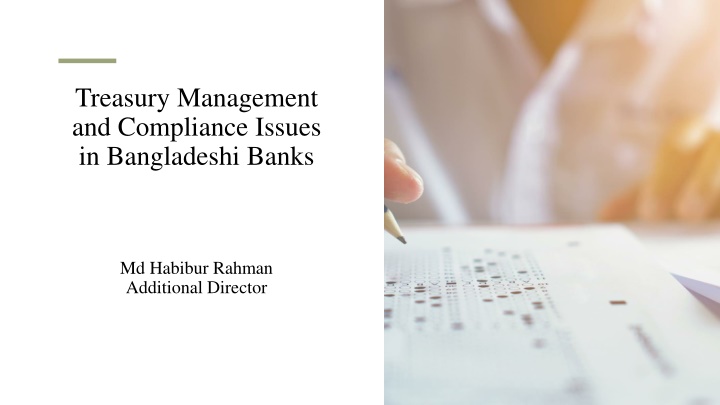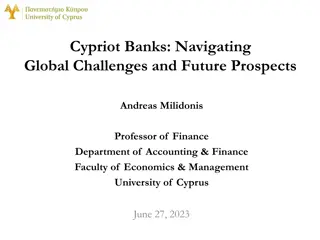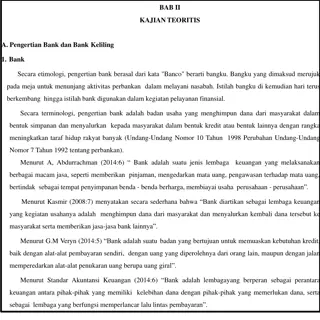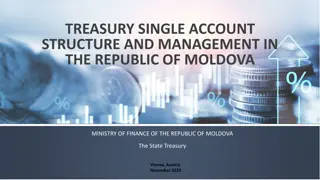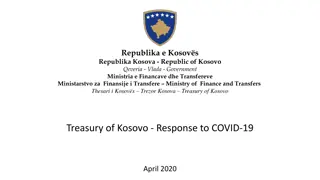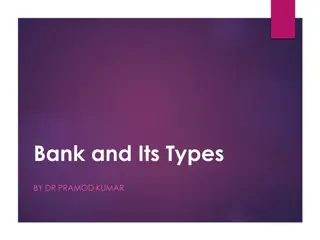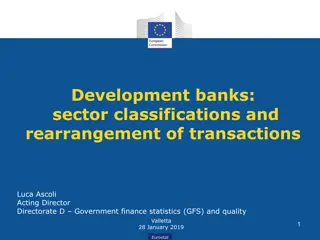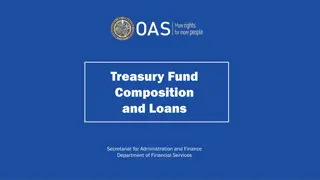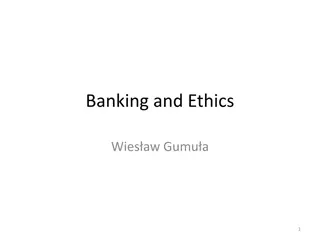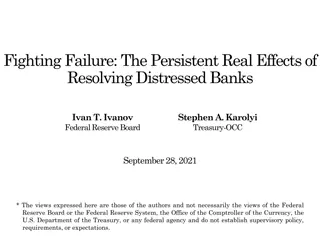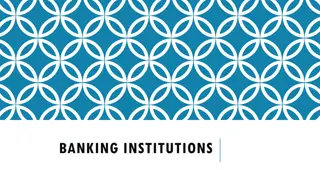Treasury Management and Compliance Issues in Bangladeshi Banks
This presentation delves into the significance of treasury management and compliance in the banking sector of Bangladesh, covering aspects such as liquidity management, cash management, risk management, investment management, and strategies for effective compliance and treasury management to optimize profitability and risk management.
Download Presentation

Please find below an Image/Link to download the presentation.
The content on the website is provided AS IS for your information and personal use only. It may not be sold, licensed, or shared on other websites without obtaining consent from the author.If you encounter any issues during the download, it is possible that the publisher has removed the file from their server.
You are allowed to download the files provided on this website for personal or commercial use, subject to the condition that they are used lawfully. All files are the property of their respective owners.
The content on the website is provided AS IS for your information and personal use only. It may not be sold, licensed, or shared on other websites without obtaining consent from the author.
E N D
Presentation Transcript
Treasury Management and Compliance Issues in Bangladeshi Banks Md Habibur Rahman Additional Director
This presentation explores the importance of treasury management and compliance in the banking sector of Bangladesh
Objectives Objective 1: Understand the concept of treasury management in banks Objective 2: Identify the key compliance issues faced by banks in Bangladesh Objective 3: Explore strategies for effective treasury management and compliance
Treasury Management in Banks Treasury management refers to the strategic handling of financial assets and liabilities by banks to optimize liquidity, profitability, and risk management
Component Asset Liability Management Liquidity Management Cash Management Risk Management Investment Management Foreign Exchange Management Finally profit Maximization
Liquidity Liquidity refers to the ability of a bank to meet the demands of its counterparties and customers for: Withdrawals from deposits. Repayment of other liabilities. Funding of new loans. Settlement of letters of credit. Performance on other off-balance sheet obligations, such as guarantees.
Importance of Liquidity Management in Banks Despite adequate capital levels Many banks experiences difficulties because they do not manage their liquidity in a prudent manner. A substantial impacts of liquidity crisis are: oBank run oHigh liquidity premium oNegative credit growth oDirect impact on profitability oHigh call money rate oImage crisis (loss of goodwill) oNegative impact on Off-balance sheet exposure
Liqudity Indicators Related to Required Reserve oCRR (Cash Reserve Ratio) oSLR (Statutory Liquidity Ratio) Basel III Liquidity Ratio oLCR (Liquidity Coverage Ratio) oNSFR (Net Stable Funding Ratio) Monitoring liquidity ratios as per ALM guidelines oWholesale borrowing oCommitment oSLP (Structural Liquidity Profile)
Liqudity Indicators Others oExposure with FI (EFI) oInvestment in Commercial Paper (CP) oNon Banking Assets (NBA) o Ship Building Refinance Scheme Special Assignment oPadma Bank ltd.
SL Statement Frequency 1 CRR Monthly 2 SLR Monthly 3 Amortization of Securities Yearly 4 LCR Monthly 5 NSFR Quarterly 6 SLP Monthly 7 CRF Monthly 8 WBRF Biweekly 9 EFI Monthly 10 CP Quarterly 11 NBA Monthly 12 Refinance Case to case basis 13 Padma Bank related Case to case basis
Cash Reserve Ratio (CRR): CRR is maintained according to the article #36 of the BANGLADESH BANK ORDER, 1972 Component of CRR Balance with Bangladesh Bank (unencumbered portion), for Offshore banking operation a bank can use balance of FC clearing account maintained with BB. CRR is maintained on bi-weekly basis 1st bi-week : 1-14 days 2nd bi-week : 15 to rest of the day for the month. Current Rate: for DBO 4% bi-weekly basis; 3.5% daily minimum. for OBO 2% bi-weekly basis; 1.5% daily minimum.
Statutory Liquidity Ratio (SLR): SLR is maintained by the Article 33 of the BANK COMPANY ACT, 1991. Current Rate for Conventional Bank: 13% of ATDTL for Islamic Shariah based banks/branches: 5.5% of ATDTL Component of SLR: Cash in Hand Excess Reserve with Bangladesh Bank Balance with Sonali Bank Ltd as an agent of Bangladesh Bank Balance with FC Clearing account of BB Approved Bangladesh Government Securities (Unencumbered) 1. Bangladesh Government Treasury Bill 2. Bangladesh Government Treasury bond. 3. Bangladesh Government Islamic Investment Bond (BGIIB) 4. Sukuk 5. Other approved securities.
Statutory Liquidity Ratio (SLR): Most of the components of SLR are in cash form except eligible securities. On the other hand, eligible securities are fully and un-conditionally guaranteed by the Government and their liquidity can be assured by following manner: Sale of securities in secondary market Repo with other commercial banks Repo with BB and special repo with BB Assured Liquidity Support (ALS), Emergency Liquidity Support (ELS) from BB Finally, the Government can buy back All (61) scheduled banks are maintaining CRR. However, 3 specialized banks (BKB, PKB, RAKUB) and BDBL are exempted from maintaining SLR.
Penalties for shortfall: For CRR shortfall: Bank Rate plus 5% (currently 9%) according to BB order, 1972 and DOS Circular no.03/2010. Penal interest is imposed separately for daily shortfall, bi-weekly shortfall, and continuous shortfall. For continuous CRR shortfall: every directors of board, and MD & head of treasury are also personally penalized. For SLR shortfall: Special Repo Rate (currently 8.75%) according to Sec-33(5) of Bank Company Act, 1991. Other Penalties: Sec.36(7) of BB order, 1972 for misreporting of CRR statement. Sec.36(6) of BB order, 1972 for delay submission of CRR statement. Sec.109(11) of Bank Company Act, 1991 for misreporting and delay submission of SLR related statements.
Liquidity Coverage Ratio (LCR): LCR aims to ensure that a bank maintains an adequate level of unencumbered, high-quality liquid assets that can be converted into cash to meet its liquidity needs for 30 calendar days. LCR goes beyond measuring the need for liquid assets over the next 30 days in a normal environment. It measures the need for liquid assets in a stressed environment. Stock of high quality liquid asset (HQLA) 100% LCR = Total net cash outflows over the next 30 days
Liquidity Coverage Ratio (LCR): Stock of high quality liquid asset (SHQLA): 1. Cash on hand (Lcy + Fcy) 2. Balance with BB (Lcy+ Fcy, excluding lien) 3. Un-encumbered approved securities (excluding lien) Total net cash outflows over the next 30 days = Total cash outflows, next 30 days - Total cash inflows, next 30 days However, Total cash inflows is capped at 75% of Total cash outflows
Net Stable Funding Ratio (NSFR): Available Stable Funding (ASF) >100% NSFR = Required Stable Funding (RSF) The NSFR aims to assessment of liquidity risk across all on- and off-balance sheet items. ASF consists of various kinds of liabilities and capital with percentage weights attached given their perceived stability. RSF consists of assets and off-balance sheet items, also with percentage weights attached given the degree to which they are illiquid or long-term and therefore requires stable funding. The time horizon of the NSFR is one year. Like the LCR, the NSFR calculations assume a stressed environment.
Wholesale Borrowing WB covers call borrowing, Short Notice Deposit from banks and financial institutions, placement received with maturity less than 12 months, commercial papers/similar instruments and overdrawn Nostro- accounts. The WB Limit should be capped at 80% (for Non PD banks) and 100% (for PD banks) of bank's eligible capital on fortnightly average basis with maximum two deviations (not more than 90% and 110% of the eligible capital for Non PD and PD banks respectively) in a particular fortnight. The eligible capital determined under Basel III for any quarter will be applicable as eligible capital until it is determined for the next quarter.
Investment in Commercial Paper (CP) Commercial paper (CP) is a short term money-market instrument, which has an original maturity between a minimum of seven days and a maximum of one year, issued/sold usually by highly rated large companies. In this context, a Guidelines on Commercial Paper (CP) for Banks has been issued by BRPD (Circular No-07, Date: 25/09/2016). Banks shall maintain provision against outstanding balance of the defaulted CPs at the following rates: o If it is past due/overdue for 03 months or beyond but less than 06 months, the provision requirement is 20%. o If it is past due/overdue for 06 months or beyond but less than 09 months, the provision requirement is 50%. o If it is past due/overdue for 09 months or beyond the provision requirement is 100%.
Non Banking Assets (NBA) BB has issued a detailed guidelines on Non-Banking Assets through BRPD circular no 22/2021. Bank reports status of NBA to DOS semi-annually DOS checks compliance of the circular, like oThe duration of holding of NBA oAny NBA is sold in significant low price oConversion to fixed asset is done properly etc.
Padma Bank Ltd. The first crisis of former the farmers bank ltd was liquidity crisis. Hence, we tool the first remedial actions like reconstruction of board, removal of MD, injection of capital etc. As the part of reconstruction, we embargoed on loan disbursement on 4 January 2017. Merging ongoing
Investment in Securities Market Govt securities Market Stock Market
What is Government Securities? Government Securities (G-Sec) means a security created and issued by the Government for the purpose of raising public loan or any other purpose as notified by the Government.
Types of Government Securities Available in BD Marketable Securities: Treasury Bills a) Bangladesh Government Treasury Bonds (BGTB) b) Sukuk c) Non-Marketable Securities: Special Treasury bonds a) Savings instruments (Sanchayapatra) b) Savings bonds. c)
Types of Government Securities Available in BD G-Sec Market in Bangladesh The G-Sec market in Bangladesh offers both tradable and non-tradable instruments. Tradable Securities: As marketable instruments, the government issues 91-day, 182- day, and 364-day T-bills, as well as 2, 5, 10, 15, and 20-year T-bonds. In 2019, the Floating-Rate Treasury Bond (FRTB) Treasury Bills (T-bills): T-bills are risk-free money-market instruments issued by the government and traded on the secondary market. T-bills are issued by the government to meet its short-term funding needs. T-bills are scripless and sold at a discount, with the face value redeemed when they mature. Treasury Bonds (T-bonds): T-bonds are plain vanilla bonds with periodic (halfyearly coupon payments and face value redemption at maturity.
Types of Government Securities Available in BD Bangladesh Government Investment Sukuk: Till now, the government has issued three Bangladesh Government Investment Sukuk. The first one, an Ijarah (lease) Sukuk, was issued in 2020 to fund a project to provide safe drinking water to the public. The second one, also Ijarah (lease) Sukuk, was issued in 2021 for the development of infrastructure in government primary schools. The third, istisna'a (manufacturing) and Ijarah (lease) Sukuk, was issued in 2022 to finance the implementation of the Important Rural Infrastructure Development Project (IRIDP)-3 for social impact. BB served as both the Special Purpose Vehicle (SPV) and the trustee in the issuance of the Bangladesh Government Investment Sukuk.
Issuance of Treasury Bill and Treasury Bond On behalf of Government, Bangladesh Bank issues T-Bills and T-bonds and Sukuk through auction. Cash and Debt Management Committee (CDMTC) comprised of different ministry, NBR and Bangladesh Bank headed by joint secretary, finance division, MoF finalize the calendar based on expected net cash flow of govt. Finance Division sends the calendar to BB to execute it.
Secondary Trading of G-sec The Secondary G-sec Market Secondary Trading Of G-sec The Secondary G-sec Market In Bangladesh: Trading In BB s Own Electronic System And Trading Through Stock Exchange (DSE & CSE) Platform. Secondary Trading Through Bb s Electronic System .Over-the-counter (OTC): If A Bargain Is Reached Through Negotiation, It Must Be Reported To The System For Settlement Subsequently. Government Securities Order-matching Trading Platform (GSOM): Gsom Is An Anonymous Order-matching Trading System Of G-sec That Is Electronic, Screen-based, And Order driven.
Secondary Trading through Stock Exchange: Any investor having a BOID can purchase T-Bonds from Stock Exchange (DSE & CSE) platform. After the purchase a BPID will be opened (if not available beforehand) against the investor in order to settle the securities in BB s Electronic System. An investor (existing holder of BPID) can transfer his bond portfolio from BB s Electronic System to Stock Exchange for trading there. The investor require to fill in the relevant transfer forms and submit it to the corresponding bank to block partial or entire portion of their holding of T-bond in BB s Electronic System.
Taxation For corporate, tax is applicable as per finance bill For individual no tax on capital gains of T-bills or BGTBs For individual 5% tax at source on interest income from T-bills or BGTBs. Interest income from G-sec of foreign investors is taxable. Registered Pension funds from NBR are exempted from tax payments on interest, while individuals, corporate body and institutions have to pay 5% tax at source on interest income . They can adjust it with their final tax.
Central Bank Liquidity Support Repo and Assured Liquidity Support (ALS) Transactions for Conventional Banks: BB provides 1 (overnight), 7, 14, and 28-day central bank repo facilities to banks and FIs to alleviate transitory liquidity problems and boost the money supply in the economy.
Central Bank Liquidity Support for Shariah based On December 5, 2022, BB has introduced Islamic Banks Liquidity Facility (IBLF) for Shari ah based banking system in Bangladesh. The tenor of the IBLF is 14 days and underlying eligible securities is unencumbered Bangladesh Govt. Investment Sukuk (BGIS). Further, on February 5, 2023, BB has introduced 7, 14 and 28 days collateralized Mudarabah Liquidity Support (MLS) for the Islamic banks in Bangladesh. In FY 2022-23, the amount of IBLF and MLS transactions with BB was BDT 96,042.00 crore and BDT 199.00 crore respectively.
Reverse Repo and Bangladesh Bank Bills Reverse repo operations are used by BB to reduce or mop up the excess liquidity of the banking sector. They are available on an overnight (one-day) basis. BB Bill is a mechanism used by BB to control the liquidity of the banking sector as an alternative to reverse repo facilities. BB issues BB bills with maturities of 7, 14, and 30 days.
Money Market(secured) Interbank Repos & Reverse Repos are transactions in which one bank agrees to sell securities (T-bill & T-bond) to another bank and then to repurchase the same securities after a specified time, at a given price, and including interest at an agreed-upon rate.
Money Market(unsecured) In 1 st December 2021, BB has launched an automated dealing and settlement system named EDSMoney for inter-bank lending and borrowing (call money, short-notice product and term product). EDSMoney Guidelines issued on 16 November 2021 for smooth functioning of interbank unsecured money market transactions. All scheduled banks and FIs (except Shariah compliant institutions) are participants of this platform. 50 Banks and 30 FIs are now operating through EDSMoney. For the purpose of EDSMoney, the products or instruments are categorized as Overnight, Short Notice and Term. a) Overnight Refers to funds placed/borrowed on an overnight basis that automatically matures on the following business day. Here, callmoney means overnight transactions in the EDSMoney platform. b) Short Notice Refers to funds transacted for a period beyond overnight and not exceeding 14 days (maturity ranges from 2 days to 14 days). c) Term Refers to placement or borrowing of funds for periods from 15 days up to 1 year.
Foreign Exchange Management Foreign exchange management refers to the process of monitoring and controlling the conversion of one currency into another. It involves various activities aimed at effectively managing currency exchange rates, mitigating risks associated with currency fluctuations, and optimizing the use of foreign currencies in international transactions.
Foreign Exchange Management Exchange Rate Monitoring: This involves staying updated on global economic indicators, geopolitical events, central bank policies, and market sentiment that influence currency values. Currency Risk Management Foreign exchange management includes strategies to hedge against currency fluctuations using financial instruments such as forward contracts, options, futures, and swaps. Transaction Processing: Managing foreign exchange transactions efficiently involves ensuring timely and accurate processing of payments and receipts in different currencies. This may include using electronic payment systems, complying with regulatory requirements, and optimizing transaction costs. Cash Flow Management: Effective foreign exchange management requires forecasting and managing cash flows in multiple currencies. This involves planning for foreign currency inflows and outflows, optimizing liquidity, and minimizing the impact of exchange rate volatility on cash flow.
Foreign Exchange Management Compliance and Regulatory Compliance: Compliance with relevant regulations and regulatory reporting requirements is an important aspect of foreign exchange management. This includes adhering to foreign exchange controls, anti-money laundering laws, and tax regulations in different jurisdictions. Risk Assessment and Mitigation: This includes evaluating exposure to currency risk, interest rate risk, credit risk, and operational risk, and implementing appropriate risk mitigation strategies. Technology and Automation: Leveraging technology and automation tools can streamline foreign exchange management processes, improve efficiency, and reduce manual errors. This may include using treasury management systems, trading platforms, and risk management software.
Ensures liquidity: Enables banks to meet short-term obligations and unexpected cash needs Importance of Treasury Management Maximizes profitability: Optimizes the returns on investments and reduces funding costs Manages risks: Mitigates credit risk, market risk, liquidity risk, and operational risk
Compliance Issues in Bangladeshi Banks Regulatory Framework: Governed by the Bangladesh Bank and other regulatory authorities Anti-Money Laundering Regulations: Compliance with AML laws and regulations to prevent money laundering and terrorism financing Know Your Customer Guidelines: Verification of customer identity and monitoring of transactions Cross-Border Transactions: Compliance with international standards such as FATCA and CRS for cross-border transactions
Importance of staying updated with regulatory changes Regulatory Updates and Adaptation Proactive engagement with regulators Adaptation of policies and practices to comply with evolving regulations
Fostering a culture of compliance within banks Compliance Culture Employee training and awareness programs Accountability and ethical behavior emphasized at all levels of the organization
Strategies for Effective Compliance Customer Due Diligence: Thorough verification of customer identities and monitoring of transactions Establishment of Regulatory Compliance Committees: Oversight and governance of compliance-related matters Continuous Improvement: Periodic assessment and enhancement of compliance frameworks
Strategies for Effective Compliance Capital Management Ensuring Sufficient Cash Reserves Minimizing Idle Cash Cash Forecasting Techniques Types of Investments: Government Securities, Bonds, Money Market Instruments Investment Strategies for Optimal Returns Managing Currency Risks Hedging Techniques: Forwards, Options, Swaps Importance of Exchange Rate Forecasting
Automated Trading Systems Efficient Capital Management Risk Management Software Data Analytics for Decision Making
Profit Maximization Some key factors to maximize profits: Interest Income: Maximizing interest income involves prudent lending practices, efficient credit risk management, and offering competitive interest rates to attract borrowers while ensuring profitability. Fee-Based Income: Banks also earn revenue from various fee-based services such as account maintenance fees, transaction fees, advisory services, and trade finance services. Cost Management: Controlling operating expenses is essential for profit maximization.
Profit Maximization Asset Quality: Maintaining a high-quality loan portfolio is critical for profitability Investment Portfolio Management- Maintaining pportfollio Foreign Exchange Operations:. Profit maximization in foreign exchange operations requires managing currency risk effectively, providing competitive exchange rates, and offering efficient remittance services. Compliance and Risk Management: Adhering to regulatory requirements and maintaining robust risk management practices are essential for sustainable profitability. Diversification and Innovation: Exploring new business lines, products, and services can contribute to profit maximization. Overall, profit maximization for banks requires a balanced approach that encompasses efficient lending practices, diversified revenue sources, cost management, risk mitigation, and a focus on customer satisfaction and regulatory compliance.
